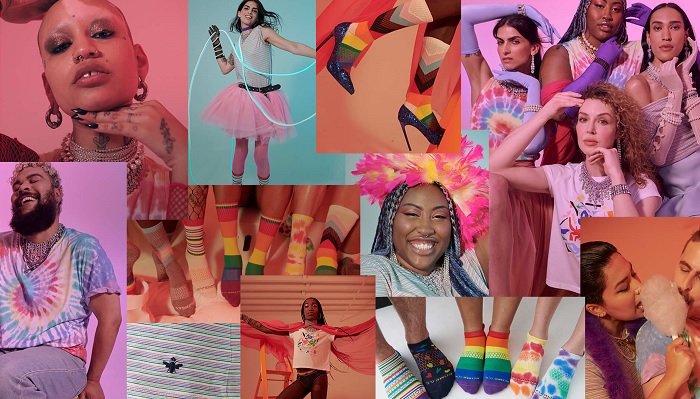Business support of the LGBTQIA+ community should not only take place during the Pride or Mardi Gras seasons, but every day of the year, an executive at cosmetics giant Estée Lauder pointed out during a seminar last week. “If you show up all year long, like what Mac Cosmetics does, then the consumer sees that and if they feel the authenticity, just like in any other way of marketing, then they’ll come to you,” said Doug Jensen, senior vice president at Estée Lauder Companies. Mac Cosmet
Cosmetics has long been a champion for the rights of the LGBTQIA community, with its inclusive slogan, “All ages, all races, all genders”. Since 1994, all profits from the sale of its Viva Glam lipstick and lipgloss have gone towards helping people living and affected by HIV/AIDS. To date, the Fund has raised more than $500 million and former ambassadors have included queer icons including drag queen RuPaul, Boy George and Elton John.
Apart from just supporting their LGBTQIA+ customers, Estée Lauder is committed to supporting the community within the business. In fact, this is the 12th year in a row that Estée Lauder has been recognised as a ‘Best Place to Work for LGBTQ Equality’ on the Human Rights Campaign’s 2021 Corporate Equality Index.
Earlier this month, Estée Lauder launched its Pride 365 program, which includes a series of intersectional events where teams could hear from LGBTQIA+ people discussing and reflecting on their lived experiences within the community.
To celebrate Pride internally this year, the company is also hosting global and local events for their teams of all backgrounds to gather and support each other virtually.
Estée Lauder employees celebrating Pride Month
“Over the last four to five years, we have an internal community raising the visibility of the LGBTQ+ community. We now have the strong support of our senior leadership in supporting this community. They’re the ones to suggest that in Pride Month, all our brands should have a Pride message on their Instagram handle,” Jensen said during a CommerceNext virtual event last week, focused on LGBTQIA issues within e-commerce and the workplace.
“This [has been] happening organically in the past few years and now it’s more organised. Our leadership team, from the top down, will say ‘Where are the Pride messages? I want to see that’.”
On the heels of the pandemic, the ongoing Black Lives Matter movement, and the rise of anti-Asian hate, Jensen said the company’s LGBTQIA+ employees research group wELCome, has also launched local chapters in the UK, Brazil, and India, and will soon in Mexico.
Bombas: Inclusion should start from the top
During the CommerceNext seminar, Jensen was joined by Myke Mansberger, vice president at New York-based sock and apparel retailer Bombas, who pointed out that diversity, equity and inclusion needs to start with the senior leadership team within a business.
“In our company, [it starts] with our CEO and his chief of staff,” Mansberger said. “It allows accountability placed on every different department, so it’s not just about employees, it bleeds out into marketing, product, merchandising and PR and all of that. I think that’s really important.”
“So, while it’s great to start with HR, we’d say go straight to the top.”
Here are three ways that Bombas has made efforts towards diversity, equity and inclusion:
1. Its values are clear before a team member has even been hired
Bombas’ inclusive culture is obvious even before an employee has started working at the company.
“When we schedule somebody for an interview, [we say]: ‘Come in as you are and not what you think we want to see’. This still works in Zoom,” Masnberger explained. “This is a signal to them what our company is all about.”
2. Teams are invited to share their stories
“We ask all members or our team to share their stories so we’ll all understand what intersectionality means,” Mansberger said. “So we always make sure there’s time for all of their voices to be heard.”
3. Bombas is experimenting with degendering its products
“One thing we did this year for our Pride campaign is our landing page is a non-binary merchandising page which we’ve never done before,” Mansberger said. “With socks, we have the opportunity to [market them] as unisex. [They have the] same construction, so there’s no reason why it has to be merchandised by gender. So we’re testing that, we’re seeing how the consumer reacts to it.”

